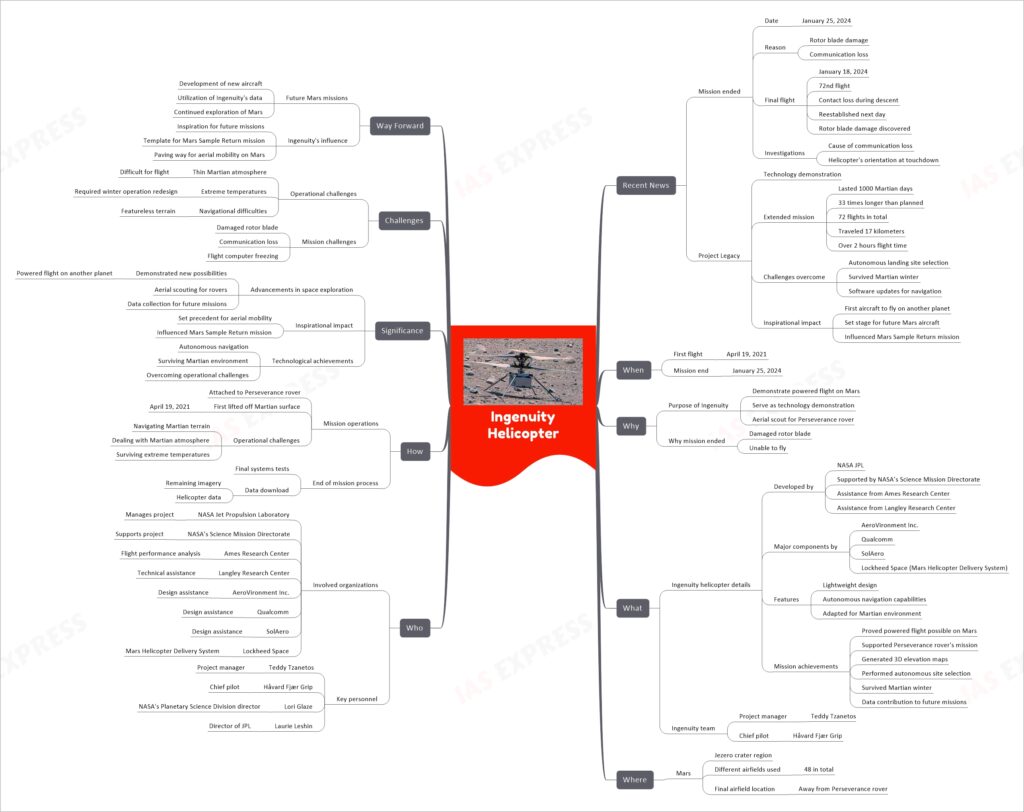Ingenuity Helicopter

The Ingenuity Mars Helicopter was a groundbreaking project by NASA’s Jet Propulsion Laboratory, aimed at demonstrating powered, controlled flight on another planet. The helicopter was a part of the Mars 2020 mission, arriving on Mars attached to the Perseverance rover on February 18, 2021. Ingenuity made its first successful flight on April 19, 2021, proving that flight is possible on Mars.
Over its extended mission, Ingenuity far exceeded its initial goals, originally planned for only five flights over 30 days. It completed 72 flights, traveling about 17 kilometers and spending more than two hours in the air. The helicopter faced and overcame various challenges, such as navigating the thin Martian atmosphere, surviving extreme temperatures, and performing autonomous landing site selection. Ingenuity’s final flight occurred on January 18, 2024, after which damage to one of its rotor blades was discovered, marking the end of its mission.
The helicopter’s achievements have had a significant impact on future space exploration, demonstrating new possibilities for aerial mobility on other planets and influencing the design of future missions, such as the Mars Sample Return mission. Ingenuity’s success and data will continue to inspire and inform future aircraft designs for Mars exploration.
If you like this post, please share your feedback in the comments section below so that we will upload more posts like this.

